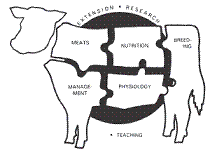Animal Science, Department of

Nebraska Beef Cattle Reports
Date of this Version
2021
Citation
Published in 2021 Nebraska Beef Cattle Report, University of Nebraska Extension Publication MP110
Abstract
Application of coal char, a coal combustion residue from the sugar factory in Scottsbluff, NE (containing up to 30 % C by weight), was evaluated as a nitrogen (N) loss mitigation tool for feedlot manure in three experiments. In experiment 1, when char was added to piled manure previously removed from feedlot pens, N loss potential was reduced (44% vs. 68% in the control). In experiment 2, manure was collected fresh from the animal, from the pen surface with cattle still in the pen, and from a pile removed from the pen. Char was mixed with these samples in replicated buckets. Total N in manure samples was in order of fresh > pen > pile in the control treatment (no char) on all three sampling events in this 100- day experiment. In char added samples, total N in piled manured was always less than in fresh or pen manure. Total N in fresh and pen manure was similar on 2 occasions out of 3 sampling events. In experiment 3, char (0.625 ton/ head) was applied to the pen surface prior to housing cattle in the pens and compared to pens with no char. Steers were fed a common dry rolled corn- based diet for 218 days. Moisture meters indicated pens with char were drier than pens without. Final body weight, daily gain, dry matter intake, and efficiency were not different due to pen treatment. These data indicate applying char from the sugar beet factory to feedlot pen surfaces may be a N loss mitigation strategy.
Included in
Large or Food Animal and Equine Medicine Commons, Meat Science Commons, Veterinary Preventive Medicine, Epidemiology, and Public Health Commons


Comments
Copyright © 2020 The Board of Regents of the University of Nebraska.